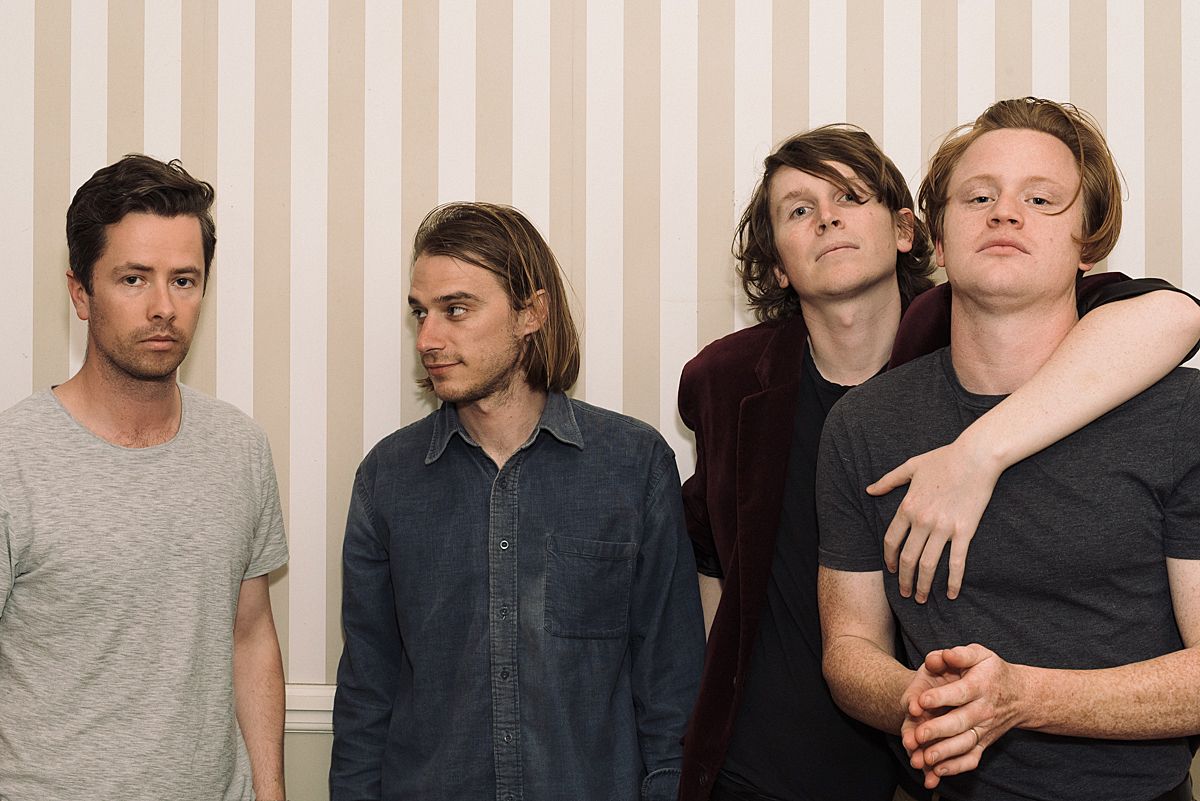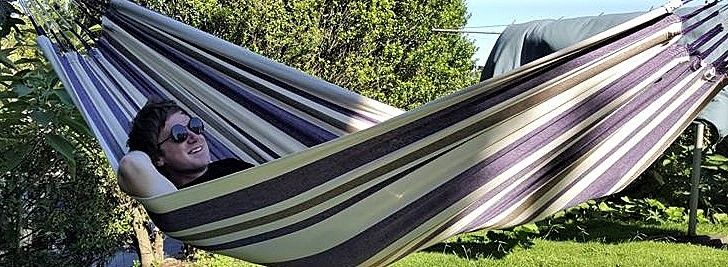Clashing Communities and Negotiating the Mundane: An Interview with Cut Off Your Hands
With their first single in six years, post-punkers Cut Off Your Hands offer a fierce critique of Auckland’s housing bubble.
James Manning talks to Nick Johnston of Auckland band Cut Off Your Hands on gentrification, influence and mental health ahead of their Laneway appearance.
With their first single in six years, post-punkers Cut Off Your Hands offer a fierce critique of Auckland’s housing bubble.
Released late last year, ‘Hate Somebody’ finds the quartet reacting to the slow gentrification of central Auckland, with lyrical content that speaks straight to anyone who’s lived in Grey Lynn. It’s rich with references to the inner-city suburb long home to a colourful, creative Auckland community: the Tongan Church, the Halfway House and drifting personalities of the streets. “Sometimes I see them / they pay 1.5 / for a shitty house / on a shitty street / Oh I don’t know,” rallies vocalist and guitarist Nick Johnston against the overt new wealth causing friction among long-established communities.
Driven by punchy percussion and guitars that chime to the flavour of Talking Heads, it’s a departure from the sweepy, airy indie-rock that structured their 2011 sophomore album ‘Hollow’. Long-time collaborator Joel Kefali – whose credits include Flying Lotus, Tame Impala and The Naked and Famous – created the accompanying video. In a further nod to Talking Heads, primal mask paintings blotch across various living rooms, perhaps also outstaying their welcome.
Their most recent release, ‘Higher Lows and Lower Highs’, explores those rhythmic textures and house-based undertones with finesse, cementing a new tonality for a new day. “You’re only just holding onto your head”, sings Johnston in the chorus, addressing his own complexities atop of layered percussion, samples, bass and guitars.
I caught up with Johnston by phone ahead of the band’s performance at the 2017 Auckland Laneway Festival on Auckland Anniversary Day. He spoke about their new music, creative process, mental illness, architecture and living with and reacting to gentrification.
Welcome back, Cut off Your Hands. Why now?
It's all quite arbitrary. There's nothing amazingly special about the story other than we got strong-armed into releasing material by our friends – like Mark Kneebone, Laneway co-promoter. Part of his offer for getting us to play at the festival was that we would release the songs that he knew we had.
So the recently released tunes have been sitting around for a while?
The stuff that's starting to come out now is like the second sacrificial lamb album after 'Hollow'. It's what the album-making process demands. I'll write twelve or thirteen tracks and then they'll end up getting thrown out because we get sick of them or something's not right. We finished recording some songs including 'Hate Somebody', and I wanted them to come out then. One or two things happened, and we were getting pulled away with life and super busy with other things.
'Higher Lows and Lower Highs' is more recent. There's a couple others that are from previous times and some are getting brought out now. They're more in line with what I enjoy about music and what I'm doing at the moment.
‘Hate Somebody’ is an engaging listen. The strong dance rhythms help emphasise the lyrical subject matter. Can you comment on the song’s background?
I wrote ‘Hate Someboy’ in Grey Lynn before I moved to Melbourne, and now I'm back again. There was an incident with Kim, who’s a character of the neighbourhood and totally harmless. She’d persist with yelling out to the cats for two hours, five to six on the corner of my street and six to seven on the corner down the road. Part of the fabric of Grey Lynn is those sorts of personalities; it was almost a Roxanne-ish vibe. She's got a kaupapa, a vision that's slightly outside everyone that lives around her. There were quite a few incidences where the well-to-do neighbours were abusive. They'd steal her bike and hide it from her, and one time a guy was spraying her from a metre away in the face with a garden hose. It was an awful treatment of people and a strange juxtaposition of Auckland.
As opposed to the bigger cities of the world like New York – where gentrification happens so fast that you don't have that painful friction – in Auckland, Crummer Road is a good example of this real slow process. It's been 50-odd years since Grey Lynn was a state-house suburb. While those communities have been driven out further south, you still have pockets of that here and you still have people coming in.
Grey Lynn is a desirable suburb. One because it's close to the city, but also because of the colourful communities that have thrived in it. You're getting people spending $1.5 million or more on these houses, who are then complaining. It seems a bit counter-intuitive to me. It's also just gentrification and I'm part of it. There's a reason why me and my friends live here, because there's a certain stage of gentrification which you can contribute to and we feel comfortable in. But we don't like it when it goes beyond that [laughs]. I'm conscious of it as well, which is why I didn't use 'gentrification' too much in the song or in conversations about it.
It's about noticing it, really. How do I feel about it and how do my friends feel about it?
And it’s not just limited to Grey Lynn, either. There are subtle effects down K Road, too.
I've been researching over the past couple years in things related to Te Reo Maori. Part of it was my thesis, where I was researching public architecture and the implications for public architects looking at the Treaty of Waitangi as a foundational document.
Last year I did a full immersion Te Reo course in conversational Maori. There's this thing about Karangahape Road, that it used to be a really beautiful, luscious garden, because of its vantage. Historically it's always been an abundant place of life, of spiritual strength. It always has this great colourful quality and it might keep persisting even in the threat of something like Ponsonby Road trying to creep in. You still sense a strong vibe to it. Maybe that's to do with, from a Maori perspective, a spiritual stature.
‘Higer Lows and Lower Highs’ is a sharp follow-up single. “There’s only language / there’s only culture / there’s only concrete slabs”, goes the opening line. There’s also hectic traffic references, and the chorus paints a picture of only just keeping it together. What’s this song about?
It's a little bit of everything. I got diagnosed with Bipolar this year – a really mild form – and the title comes from what's going on in my head, as a person with all these sorts of complaints.
It's trying to regulate things that you do. From a mental health perspective, getting more routine in your life, getting comfortable with the way that things happen on a routine basis, and regulating that with certain medications. It’s also those things that you're trying to regulate and negotiate in everyday life, so there's lots of stream-of-consciousness: language and culture, dancing, computers everywhere and concrete slabs, and then there's waiting for the love of your life to say it's all right.
“I am on the corner / I am on the outside / holding out my hand”, sounds dramatic, but I came from a religious background as a child, and your arms stretched out is this religious, spiritual gesture. The flipside is I'm just waiting for the traffic to get a little lighter. It’s the negotiation of how you regulate the routines of everyday, mundane things. Then you complain, even though you've got a lot of privileges. It’s being aware of that.
Sonically, ‘Hate Somebody’ sounds indebted to David Byrne and Talking Heads. Has this stylistic change altered the way you write?
I like to wear references quite heavily on the sleeve because I think it's fun, and the Remain in Light Talking Heads-era is what I was thinking when we were recording.
I was getting a bit bored with the way I was writing songs, so that was a way of making it interesting again for me. It’s something we got from those Talking Heads records and even guys like Dylan and Leonard Cohen, where they keep things on a sample and on a loop, almost. A lot of the heavy textures, the big percussion, came from Jeremy Toy who recorded us and engineered it. It was an extra element I hadn't thought of so much, so things became more rhythmical, a lot more emphasis on the dance.
I understand you work in architecture by day. Has your role in architecture influenced the way you approach music?
For me it's the other way around. In music, having to create things regularly and forcing yourself to create is something that helps with the architectural practice. You realise how important the conceptual drive is and how important it is to be unafraid of failure. To just put things out, do ideas and switch them out. Even if you think they might be a bit shit, I think early on in making music you quickly realise that you can only gain. At least you've done it and can learn from it. Whereas if you have a fear of failure, you tend to stagnate.
With architecture, while the parameters and restrictions are quite different, in the early conceptual stages and the creativity, there are similarities. In terms of music and architecture, there's the David Byrne link, but it's very easy and trendy to say that [laughs]. I try not to lean too heavily on the lyrics, but there are some fascinating clichés and lingo in the way that people talk about architecture and urban planning which I use every now and then. As loaded terms and language tools they're quite interesting.
Do you intend on releasing any larger bodies of work soon?
There's enough songs for either an EP or a short album. I really love short albums. I lot of '70s and '80s albums are like that. It's a discussion we're still having. Whether we compile it on a vinyl – as two EPs, one long EP, or one short album – that will come later. We'll probably just release a new song every couple months for the next little while and see how that goes.
Who are your picks for Laneway this Monday?
Floating Points live will be a good one. I haven't seen him play but I've listened to a lot of his mixes and DJ sets and love that whole crew, like Four Tet. For a bit of nostalgia, I'd love to see a few songs of Refused. King Gizzard and the Lizard Wizard and Nikolai, too.


